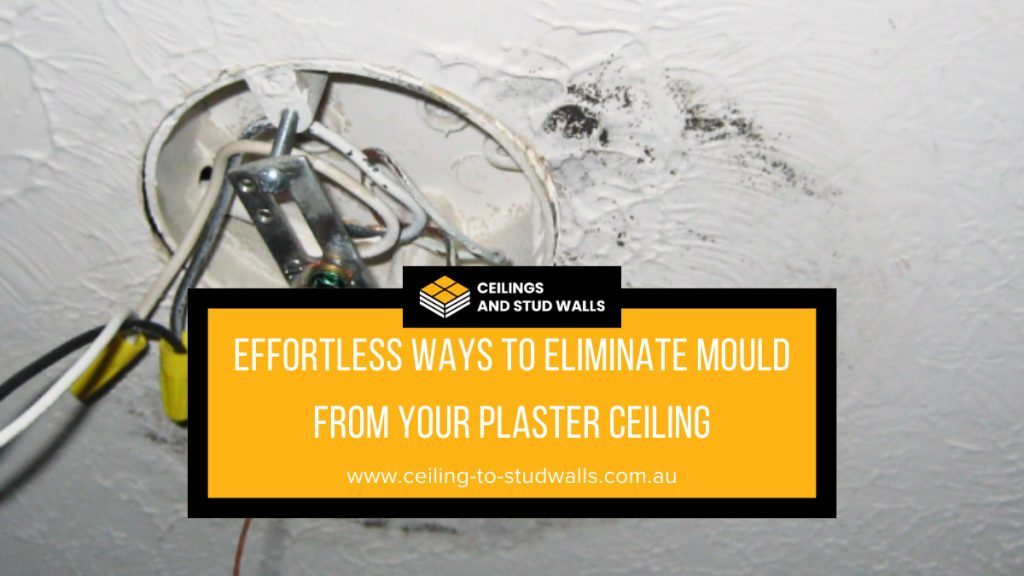
Achieving a pristine and inviting home is a shared aspiration, and proper maintenance is the key to realising this goal. A clean home not only fosters a welcoming environment but also contributes to our well-being.
Neglecting household cleanliness can lead to the growth of mould and mildew, impacting both your health and the appearance of your home. Living in a mould-infested space is not only aesthetically displeasing but can also pose health risks, including:
- Asthma attacks
- Respiratory infections
- Sinus issues
- Dermatitis
- Blocked noses
- Red or itchy eyes
One often overlooked aspect of home maintenance in this regard is the proper care of plaster ceiling moulds. These decorative elements, while enhancing the aesthetic appeal of your living space, can also become breeding grounds for mould if not regularly inspected and cleaned.
The intricate designs and crevices of plaster ceiling moulds provide an ideal environment for mould to thrive if left unattended. To ensure a healthy living environment, it’s crucial not only to address visible mould issues on walls and surfaces but also to pay attention to often-neglected areas such as plaster ceiling moulds.
Plaster Ceiling Moulds
Mould can thrive in various conditions, such as:
- Condensation
- Leaks
- High humidity
- Poor ventilation
These factors contribute to mould growth, especially on plaster ceilings and walls. Improving ventilation is the initial step in preventing mould from taking hold in your home.
Simple practices, like keeping windows open during the day to allow sunlight and fresh air in, can significantly enhance air circulation. However, if mould has already made its presence felt, a proactive approach is necessary.
Rather than resorting to immediate plaster ceiling repairs, consider implementing effective methods to eliminate mould from your living spaces.
Proven Methods for Mould Removal
Maintaining a clean plaster ceiling is essential for durability and mould prevention. Instead of opting for extensive repairs, regular cleaning can preserve the ceiling’s original condition by eliminating dirt and stains.
Below are two practical methods for removing mould:
1. Vinegar-based Mould Removal
Tools and Materials:
- Ladder
- Spray bottle
- White distilled vinegar
- Plain water
- Small brush
- Clean, soft cloths
Cleaning Steps:
- Pour vinegar into the spray bottle.
- Spray the vinegar on mould and stains until damp, allowing it to sit for an hour.
- Soak a cloth in water and wipe away the mould.
- Use a brush to scrub hardened stains and fungi.
- After cleaning, dab the area with a clean cloth.
- Leave a window open to aid in drying the cleaned area.
2. Bleach-based Mould Removal:
Tools and Materials:
- Ladder
- Water
- Bleach (chlorine bleach recommended)
- Bucket
- Clean, soft cloths
- Gloves
- Goggles
- Mask
Cleaning Steps:
- Open windows for proper air circulation.
- Put on gloves, goggles, and a mask.
- Mix bleach and water in a bucket (1 bleach:10 water).
- Dip a cloth into the solution, gently squeezing it.
- Wipe mould and stains with the cloth.
- If the cloth gets dry, dip it into the solution and repeat until the mould is removed.
- If the solution gets dirty, remake it and use a new cloth.
- Press and dab the cleaned area with a dry cloth.
Regular maintenance is vital for a clean home and preventing the need for extensive repairs. If you encounter severe damage, consider professional plaster ceiling repair services.
Contact us for immediate assistance in restoring your living space.
